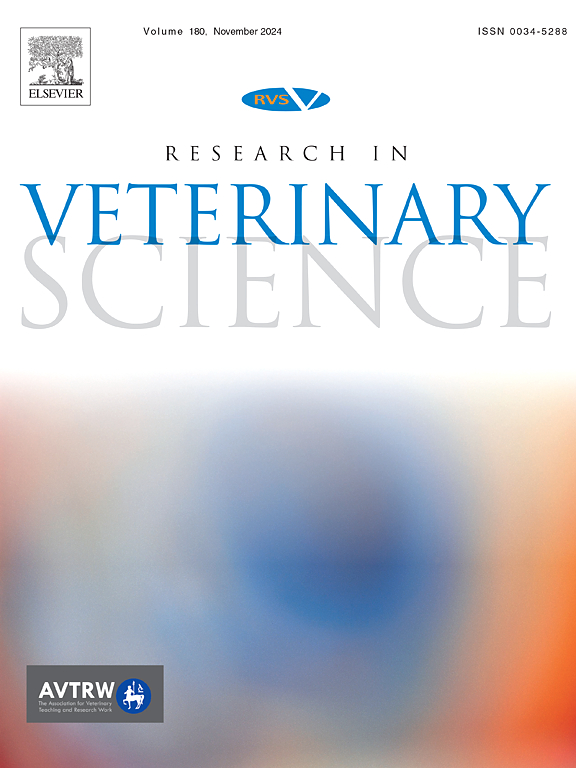Exploring endosymbionts and pathogens in Rhipicephalus sanguineus and Ctenocephalides felis felis with Oxford Nanopore Technology
IF 2.2
3区 农林科学
Q1 VETERINARY SCIENCES
引用次数: 0
Abstract
Fleas and ticks play a crucial role in public health as vectors of multiple diseases affecting humans and animals. Several rickettsial pathogens and endosymbionts are transmitted by fleas and ticks. Therefore, understanding this group of microorganisms is essential for fully grasping the spectrum of pathogens transmitted by vectors and the interactions between endosymbiotic microorganisms and their hosts. This study evaluated the presence and diversity of Rickettsiales species in fleas and ticks collected from the Santander department in Colombia. For the methodology a 16S gene amplification approach through Oxford Nanopore sequencing technologies in Rhipicephalus sanguineus and Ctenocephalides felis felis was used. Our findings revealed the presence of multiple pathogenic and endosymbiotic microorganisms, particularly from the Rickettsia and Wolbachia groups. We observed a clear association between Rickettsia species and ticks, while Wolbachia was predominantly found in fleas. Additionally, other important microorganisms were identified, including Anaplasma phagocytophilum, Rickettsia conorii, and different strains of Wolbachia that serve as endosymbionts in various arthropods. These results underscore the importance of fleas and ticks in the transmission of both pathogenic and endosymbiotic microorganisms. The distinct patterns of association between specific pathogens and vectors provide insight into their transmission dynamics. Identifying pathogens such as Anaplasma phagocytophilum and Rickettsia conorii further highlights the need for continued research into vector-borne diseases in Colombia. Understanding the interactions between endosymbionts and pathogenic microorganisms in these vectors could lead to the development of more effective strategies for controlling diseases transmitted by fleas and ticks.
求助全文
约1分钟内获得全文
求助全文
来源期刊

Research in veterinary science
农林科学-兽医学
CiteScore
4.40
自引率
4.20%
发文量
312
审稿时长
75 days
期刊介绍:
Research in Veterinary Science is an International multi-disciplinary journal publishing original articles, reviews and short communications of a high scientific and ethical standard in all aspects of veterinary and biomedical research.
The primary aim of the journal is to inform veterinary and biomedical scientists of significant advances in veterinary and related research through prompt publication and dissemination. Secondly, the journal aims to provide a general multi-disciplinary forum for discussion and debate of news and issues concerning veterinary science. Thirdly, to promote the dissemination of knowledge to a broader range of professions, globally.
High quality papers on all species of animals are considered, particularly those considered to be of high scientific importance and originality, and with interdisciplinary interest. The journal encourages papers providing results that have clear implications for understanding disease pathogenesis and for the development of control measures or treatments, as well as those dealing with a comparative biomedical approach, which represents a substantial improvement to animal and human health.
Studies without a robust scientific hypothesis or that are preliminary, or of weak originality, as well as negative results, are not appropriate for the journal. Furthermore, observational approaches, case studies or field reports lacking an advancement in general knowledge do not fall within the scope of the journal.
 求助内容:
求助内容: 应助结果提醒方式:
应助结果提醒方式:


